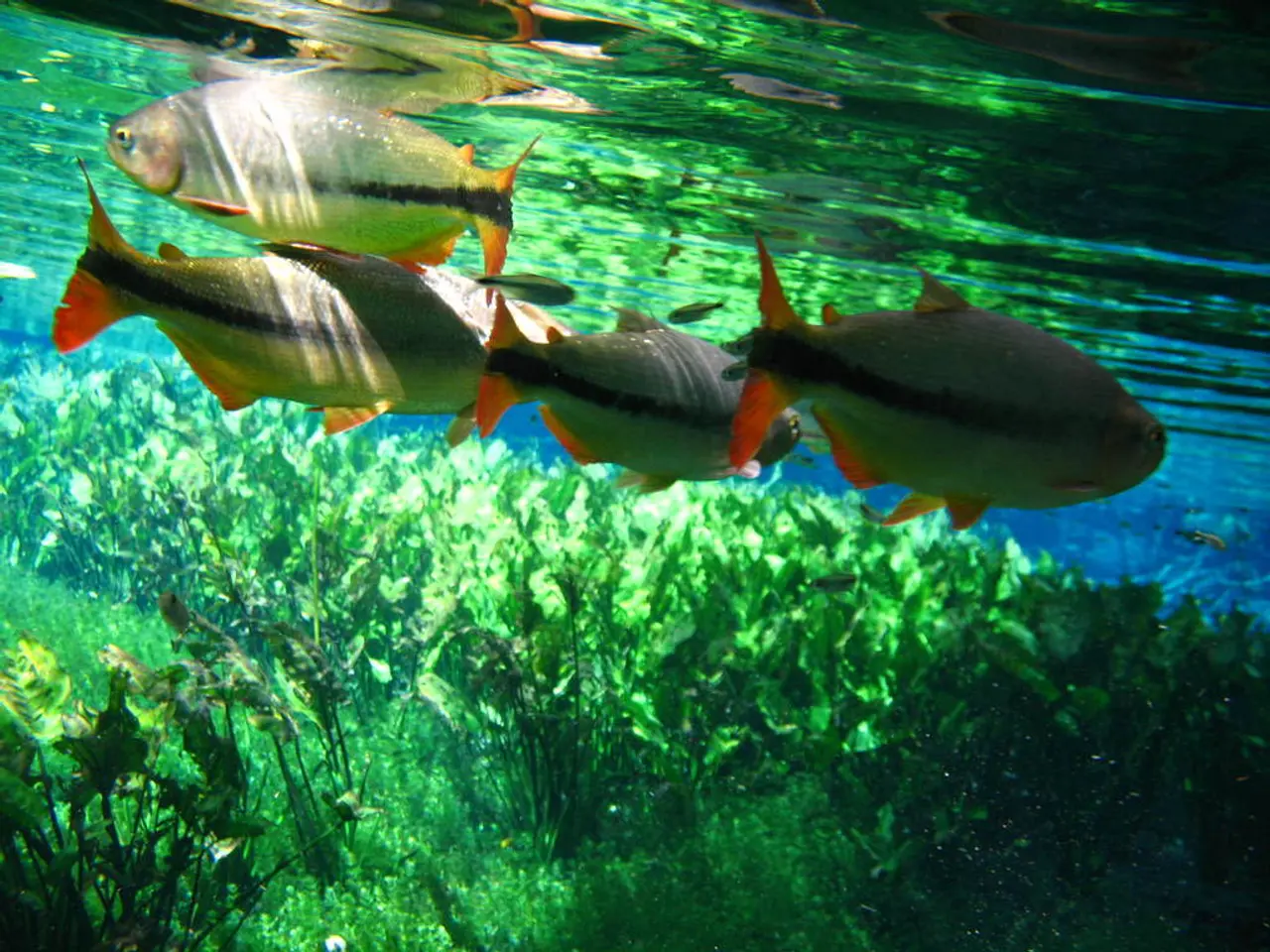Temporarily Escaped Endangered Fish Seek Shelter from El Niño at Birch Aquarium, Scripps
Protecting the Endangered Southern California Tidewater Goby: A Collaborative Conservation Effort
The Southern California Tidewater Goby, a native California species considered endangered, is the focus of a concerted conservation effort. This initiative aims to preserve the species through habitat restoration and protection, with projects like the Topanga Lagoon Restoration Project playing a significant role [1][2].
This multi-agency project, involving California State Parks, CalTrans, the County of Los Angeles, and the Resource Conservation District of the Santa Monica Mountains, collaborates to improve biological and cultural resources, manage coastal access, and prepare for challenges such as sea level rise.
In a unique and crucial role, the Birch Aquarium at UC San Diego steps in during El Niño storms to protect the tidewater gobies. The aquarium, along with partners like Aquarium of the Pacific and Heal the Bay Aquarium, takes in rescued northern tidewater gobies for several months of care before returning them safely to the wild once conditions improve [3][4]. This hands-on involvement helps mitigate mortality during extreme weather events caused by El Niño, which can disrupt or destroy the gobies' coastal lagoon habitats.
The public can visit the fish in the aquarium's nursery, located in the Hall of Fishes, as some of the endangered fish may be pregnant, and if they successfully breed, the juveniles will be returned to the wild. The Birch Aquarium, accredited by the Association of Zoos and Aquariums, has an annual attendance of over 400,000, including 40,000 school children.
The long-term conservation of Tidewater Gobies requires continued protection and restoration of degraded habitat. Nearly 300 Tidewater Gobies were collected at multiple locations at Camp Pendleton and brought to Birch Aquarium as part of an emergency action plan, collaboratively executed by the California Department of Fish and Wildlife, U.S. Fish and Wildlife Service, and Marine Corps Base Camp Pendleton [5]. Each population of Tidewater Gobies will be returned to the particular lagoon from which it was collected once the current El Niño storm season has passed.
Researchers at UCLA have expressed concern about the potential negative impact of El Niño storms on the already threatened population of Tidewater Gobies. The fish are small and native to the coastal lagoons and estuaries of California, requiring a slow-moving mix of fresh and salt water.
The public is invited to learn more about how they can help save threatened and endangered ocean animals on Endangered Species Day on May 20. By supporting conservation efforts like those for the Southern California Tidewater Goby, we can ensure the continued existence of this unique and vital part of California's biodiversity.
References:
- Topanga Lagoon Restoration Project
- Topanga Lagoon Restoration Project: A Collaborative Approach to Coastal Conservation
- Birch Aquarium at Scripps: El Niño Response and Recovery
- Heal the Bay Aquarium: El Niño Response and Recovery
- California Department of Fish and Wildlife: Emergency Action Plan for Southern California Tidewater Goby during El Niño
In light of the concerns about the impact of El Niño storms on the endangered Southern California Tidewater Goby, research in environmental science suggests potential solutions for health-and-wellness of these marine species. For instance, collaborative efforts in climate-change mitigation can help prepare coastal habitats for such extreme weather events, thus safeguarding vulnerable species like the Tidewater Goby [5]. Moreover, educational programs like those during Endangered Species Day can inspire the public to support science-backed conservation projects, ensuring the survival of the Tidewater Goby in the long term.




